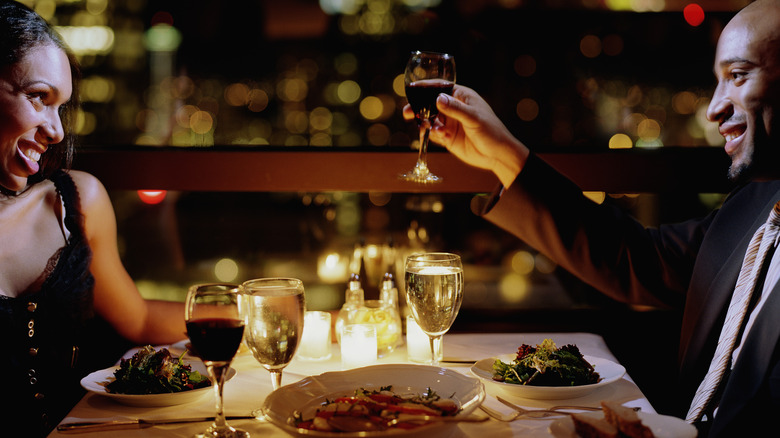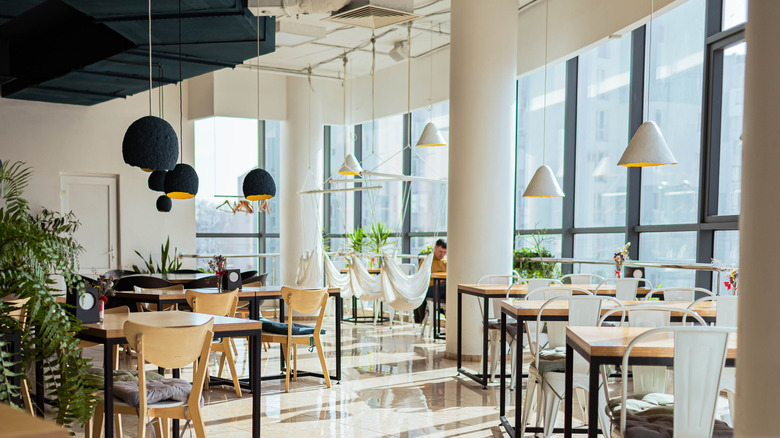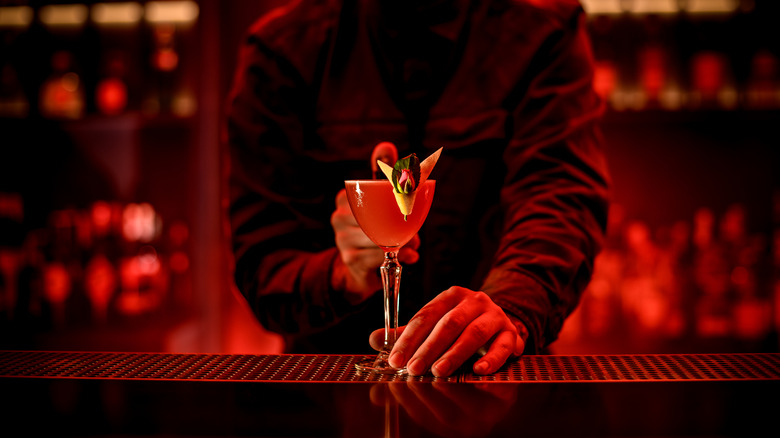Restaurant Lighting Affects The Dining Experience More Than You Might Expect
Sometimes lighting makes all the difference. A flickering overhead fluorescent bulb can certainly inspire a sense of unease in anyone, and cozy ambient light might be just the thing to help you unwind after a long day. But did you know that lighting can influence more than just your mood, but also your eating habits? The lighting a restaurant chooses can impact your dining experience in many ways, and restaurants are using lighting schemes to influence you. After all, there's a reason a high-end steak house is candle-lit, and your favorite salad spot seems clear, spotless, and bright. And it comes down to more than just the cost of your meal.
According to a recent Cornell University study, a restaurant's lighting can impact whether you order healthy food. The study showed that dining in a brightly lit environment increases the likelihood of diners to select healthy options from the menu by 16 – 24%. This is because bright lights make diners more alert and can amplify their emotions. Of course, that alertness also impacts other aspects of the dining experience, such as the length of your stay. Consider these factors next time you settle into that plush, candlelit booth, or brush through the stainless steel ordering queue of your local lunch counter.
Sit and stay for a while (or don't)
Considering the benefits that bright lights can give diners, one might wonder why any restaurant would opt for a dim, candle-lit route. However, it's important to note that restaurants often have to balance ambiance with functionality in their lighting choices. While bright lights can help diners stay alert, they can also prevent diners from fully relaxing, and thus enjoying their meal.
You may notice that your favorite sandwich spot, lunch counter, or fast-casual restaurant puts you, well, in a hurry. Of course, it doesn't help that you usually visit your Chipotle or CAVA on a time crunch. Fast food restaurants are actually designed to hurry you along. Bright lighting in fast-casual restaurants shortens stays and increases customer turnover.
On the other hand, upscale restaurants often use softer lighting, which helps put customers at ease. Often, restaurants will use a variety of lighting methods to set the mood for their diners. During the day, restaurants will utilize natural lighting brought in through large windows in order to bring a calming sense of brightness to a dining area without the harshness of fluorescent lights. As the day shifts into the night, restaurants will often shift to ambient lighting, an illuminated source of light that is not as direct as overhead lighting, which helps to bring a more relaxed mood to an environment. This relaxed setting can actually help diners to enjoy their meals more thoroughly. According to a 2012 study, a relaxed dining environment both slows consumption and increases satisfaction.
Getting experimental with lighting
Of course, the business of restaurant lighting is a lot more complex than just ambient and bright lighting. Restaurants can use a variety of lighting methods to influence your dining experience. For example, many create the illusion of a dimly lit space while maintaining a well-lit environment. This is done by adding candles to tables during the evening. The candles give off a warm light, just bright enough to illuminate those sitting at the table. This trick helps to create a sense of intimacy without sacrificing the diner's ability to fully see and enjoy their meal.
Still, some restaurants take a more novel approach to lighting in their dining rooms. For example, the restaurant Dans Le Noir removes the element of light entirely, plunging their guests into complete darkness during the entirety of their meal. The lack of light is meant to help diners fully immerse themselves in their other senses while eating and helps restaurant-goers to be more attentive to their meal.
Other restaurants are less absolute in their lighting philosophy. The growing trend of red lighting in restaurants, for example, is a move against the usual dim, ambient lighting that has become standard. Red lighting, unlike ambient light, engages the senses and arouses diners' appetites. And though most restaurants won't leave you in the dark or have you seeing red, they will use some level of lighting manipulation to influence your dining experience. So next time you're out to dinner, take note of how the restaurant lightens up your appetite.


